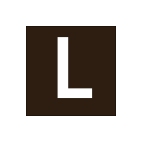...
The panonceaux that have to be hung over the doors of notaries.
The Church is on the other side of the street, twenty paces farther down, at the entrance of the square. The little cemetery that surrounds it, closed in by a wall breast high, is so full of graves that the old stones, level with the ground, form a continuous pavement, on which the grass of itself has marked out regular green squares. The church was rebuilt during the last years of the reign of Charles X. The wooden roof is beginning to rot from the top, and here and there has black hollows in its blue colour. Over the door, where the organ should be, is a loft for the men, with a spiral staircase that reverberates under their wooden shoes.
The daylight coming through the plain glass windows falls obliquely upon the pews ranged along the walls, which are adorned here and there with a straw mat bearing beneath it the words in large letters, "Mr. So and so's pew." Farther on, at a spot where the building narrows, the confessional forms a pendant to a statuette of the Virgin, clothed in a satin robe, coifed with a tulle veil sprinkled with silver stars, and with red cheeks, like an idol of the Sandwich Islands; and, finally, a copy of the "Holy Family, presented by the Minister of the Interior," overlooking the high altar, between four candlesticks, closes in the perspective. The choir stalls, of deal wood, have been left unpainted.
The market, that is to say, a tiled roof supported by some twenty posts, occupies of itself about half the public square of Yonville. The town hall, constructed "from the designs of a Paris architect," is a sort of Greek temple that forms the corner next to the chemist's shop. On the ground floor are three Ionic columns and on the first floor a semicircular gallery, while the dome that crowns it is occupied by a Gallic cock, resting one foot upon the "Charte" and holding in the other the scales of Justice.
But that which most attracts the eye is opposite the Lion d'Or inn, the chemist's shop of Monsieur Homais. In the evening especially its argand lamp is lit up and the red and green jars that embellish his shop front throw far across the street their two streams of colour; then across them as if in Bengal lights is seen the shadow of the chemist leaning over his desk. His house from top to bottom is placarded with inscriptions written in large hand, round hand, printed hand: "Vichy, Seltzer, Barege waters, blood purifiers, Raspail patent medicine, Arabian racahout, Darcet lozenges, Regnault paste, trusses, baths, hygienic chocolate," etc. And the signboard, which takes up all the breadth of the shop, bears in gold letters, "Homais, Chemist." Then at the back of the shop, behind the great scales fixed to the counter, the word "Laboratory" appears on a scroll above a glass door, which about half way up once more repeats "Homais" in gold letters on a black ground.
Beyond this there is nothing to see at Yonville. The street (the only one) a gunshot in length and flanked by a few shops on either side stops short at the turn of the highroad. If it is left on the right hand and the foot of the Saint Jean hills followed the cemetery is soon reached.
At the time of the cholera, in order to enlarge this, a piece of wall was pulled down, and three acres of land by its side purchased; but all the new portion is almost tenantless; the tombs, as heretofore, continue to crowd together towards the gate. The keeper, who is at once gravedigger and church beadle (thus making a double profit out of the parish corpses), has taken advantage of the unused plot of ground to plant potatoes there. From year to year, however, his small field grows smaller, and when there is an epidemic, he does not know whether to rejoice at the deaths or regret the burials.

